My oldest daughter has grown out of most of her clothes this year… they all grow out of their clothes every year, so I’m not sure why I’m surprised. The younger kids can usually be outfitted with hand-me-downs until I can get to the store or sew something, but it’s a challenge keeping up with the oldest kids when they need a whole new wardrobe all at once. I’m not against buying store-bought clothes, but I enjoy making them unique things they will love. And usually it takes less time to sew up a dress than to load six kids in the van and search all over town for the perfect thing.

We found a couple of cute knit tank dresses like this and this, while we were looking for ideas online. The wide tank straps and the drawstring waist reminded me of the Mini Southport Dress by True Bias. I thought I could make it work in knit, and it worked out exactly as I hoped! I made a few modifications because of the fabric, and also made a couple of (easy) style changes.
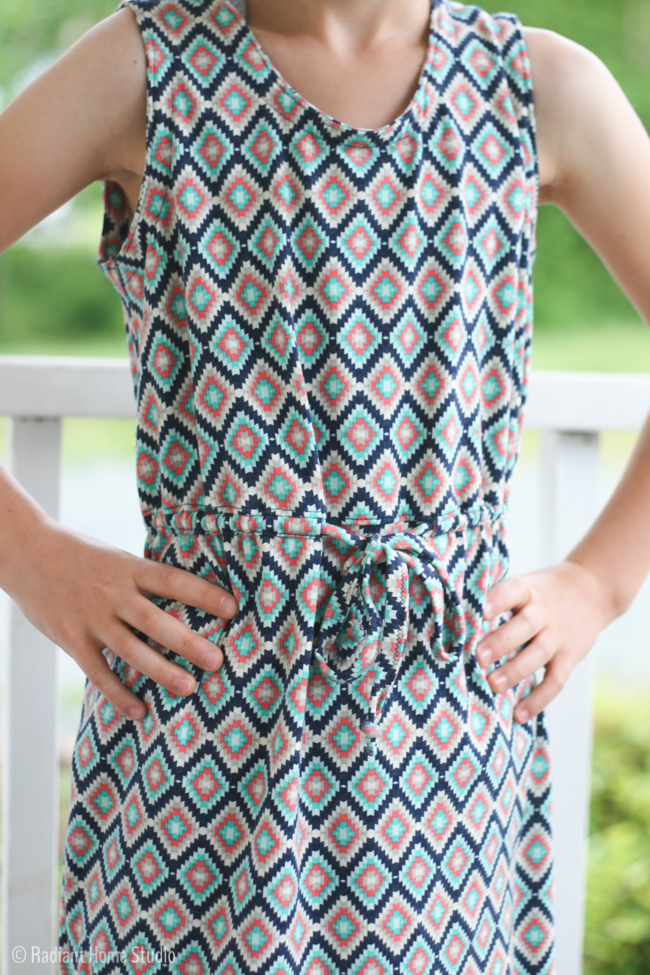
To accomodate the knit fabric, I cut the pattern at the recommended size on all of the height measurements and graded down on the width measurements on the bodice. For example, I cut a size 8 bodice, but graded down to a 7 on the side seams under the arms. As you can see, there is still a little gaping under the arm. You might want to remove more from under the arm to shorten the armscythe if you decide to try this. My daughter always layers a tank top underneath anyway, so the loose fit is fine for her.
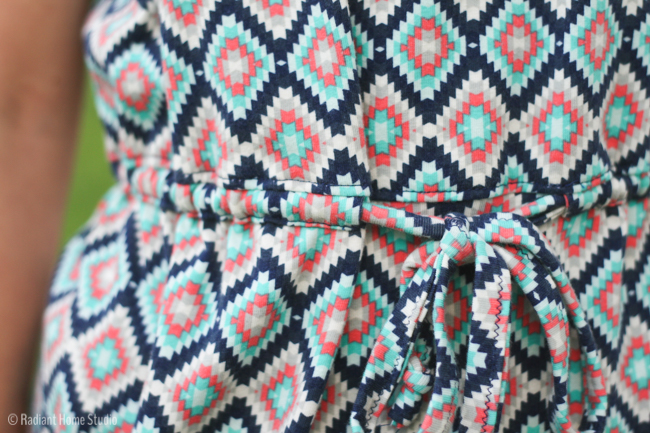
I decided not to include the buttons. Though it could be done (with proper interfacing), it was easier to cut a full front bodice. To do this, I just aligned the “center” arrow marking on the pattern piece with the fold of the fabric and cut it out, ignoring the extension for the button placket. I also thought a faux button placket would work well on knit, so if you like the look that might be an easier option.
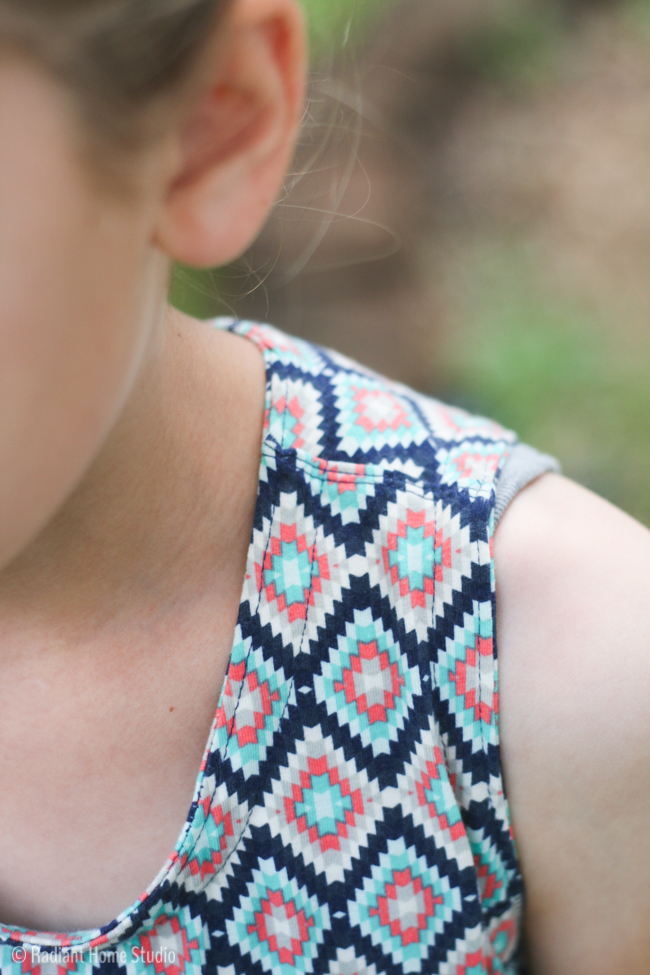
For the neckline and armhole binding, I cut 1 3/4″ strips of the same knit fabric and applied it the same way as described in the pattern. I did find it easier to cut my strips too long and apply them before joining the seams under the arms. I also used a straight stitch on this part, even though a zigzag or stretch stitch is best for knits. Since the pattern is drafted for wovens, I knew that those bindings could be stable and fit without stretching. I would recommend double-checking the size of the neckline against your child’s head. I didn’t need to change anything, but you can lower the neckline a bit if needed.

The skirt width didn’t need to be adjusted, since this is a loose-fitting skirt. Make sure it’s the same size as the bodice at the waist though. I used the size 8 width and added several inches to the length. A skirt this long also needs some side slits so that she can still run. I stopped sewing the skirt side seams about 10″ above the hem, then folded the seam allowances to each side and topstitched them in place with a twin needle. With woven fabric, you’d want to double fold the seam allowance (a technique Kelly uses in some of her other patterns), but I opted to single fold and leave the raw edge of the knit (which won’t fray and won’t show) to eliminate bulk.
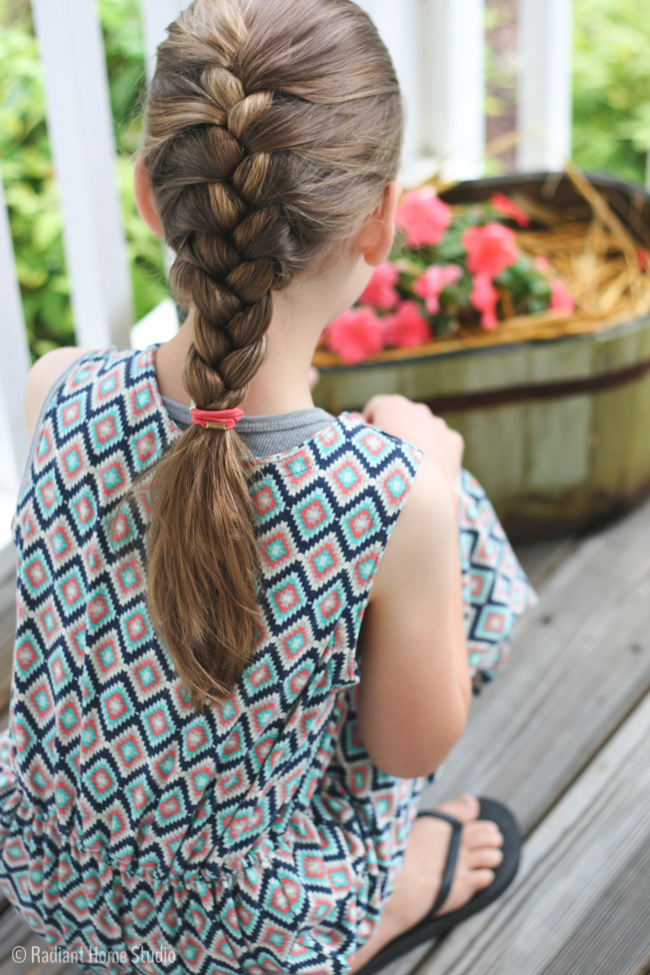
Finally, I added a some stabilizer and topstitching to some of the seams to make the seams stronger. I fused a strip of knit interfacing to the shoulder seams and stitched those with a twin needle. Then I folded the seam allowance to one side and topstitched with the twin needle. I used the same process for the bodice side seam. Around the waist, I topstitched the seam allowance to the bodice with a straight stitch. Again, the straight stitch here works since the dress is drafted for wovens and doesn’t need to stretch at this point.
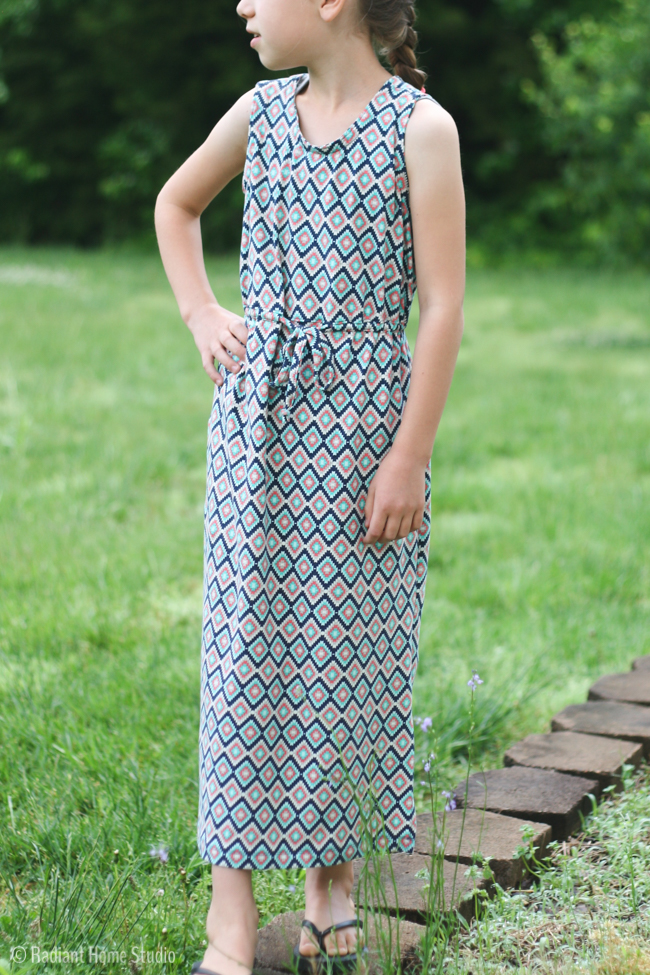
I think that’s it! It’s sounds complicated when I write it all out, but if you’ve sewn with knits a couple of times (I highly recommend the Oliver + S patterns for knit beginners if you want to learn some great tips!) you just need to transfer your knowledge and make a few adjustments. I did all of my stitching with a regular machine, so you don’t even need a serger.
You can also check out my tips for using a twin needle, which are a sanity saver when sewing with knits!


